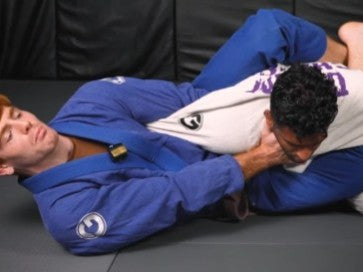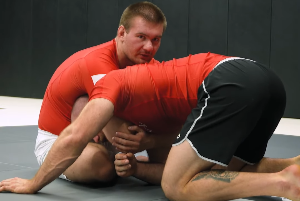
If you're starting Brazilian Jiu Jitsu (BJJ) for the first time, then you will need to buy a gi. You might be asking yourself, "I already have a Judo Gi, can I just use that?"
Well, the answer is a little complicated. Judo gis and BJJ gis are what I like to call same-same-but-different.
Sure, you can train Jiu Jitsu in a Judo uniform and you probably won't royally tick anyone at your academy off, but there are a few reasons why you might want to pick up a Jiu Jitsu specific gi...
What are the Differences Between Judo Gis vs BJJ Gis?
There are a few key differences between judo gis andBJJ gis. First, judo gis tend to have baggier sleeves, and a longer skirt. In terms of the weight of the material and the thickness of the gi collar, a cheap 'student' judo gi is probably going to be very similar to a BJJ gi.
More expensive competition judo gis, however, are much heavier, and have a much thicker and harder collar.
BJJ gis, in contrast, have tighter cuffs both on the jacket and the pants, and a skirt that comes down only as far as the crest of the buttocks (in training, many people wear gis that are even shorter than this, but that would not be legal in competition). BJJ collars tend to be lighter and more flexible.
Here are a few of our best selling Jiu Jitsu gis, along with their primary features and benefits:
The Foundation Gi
A medium weight Peal Weave gi, perfect for all-around every day training.
The Aeroweave Gi
An ultralight gi that excels in hot climates, or for competitors who need to cut weight.
In a pinch, you could use one of our Jiu Jitsu gis in a Judo class. But if you're taking martial arts seriously, it's a good idea to separate the sports: get a Jiu Jitsu gi for Jiu Jitsu, and a Judo Gi for Judo.
Why the Differences Between Jiu Jitsu and Judo Gis?
The differences between a Judo gi and a BJJ gi are sport specific. Judo training involves a lot of throwing and while Brazilian Jiu Jitsu may look similar (at the start of a match at least), they are entirely different martial arts. BJJ training involves more pulling and using the gi in submissions.
Does the Weight and Cut of the Gi Matter?
For day to day training, the weight of the gi fabric doesn't matter too much. Many people wear very lightweight 'travel gis' in the summer, and then heavier weight gis like our Valiant Gi in the winter.
A heavy judo gi is closer to the 'tank' end of the spectrum. These gis may be very hot to wear, but other than that you shouldn't notice too much difference.
The cut does matter, however. If you like to do ezekiel chokes, then baggy sleeves are quite useful. If you like to perform the 'garotte' choke with your own lapel, then having a long lapel is handy.
In contrast, if you hate it when your sparring partners play worm guard, having a shorter lapel might be advantageous to you because it makes the gi harder to grab.
In competition, both the cut and weight of the gi matter a lot. A judo gi will be legal in a BJJ tournament that followsIBJJF (International Brazilian Jiu Jitsu Federation) rules, assuming it is the correct size. You would not be allowed to wear a BJJ gi at a judo tournament that uses IJF rules.
Most people would not choose to wear a judo gi for a BJJ tournament, even though it is legal, because judo gis are too heavy. While there are some rulesets that allow people to weigh in without their gi, the IBJJF and many other major promotions expect people to weigh in just before stepping on the mat, while wearing their uniform.
An average "competition legal" BJJ gi weighs less than 5 pounds. Judo gis can be double that in weight because the weave is so much thicker.
The weight of a gi can also have a big impact on sizing/fit. Heavier weight gis will shrink more than lightweight gis... especially if you put them in the dryer! Be sure to read our guide on how to care for your Jiu Jitsu gi to ensure your uniform lasts a lifetime and fits like a glove.
IBJJF 2024 Uniform Rules Update
The IBJJF launched new uniform rules in 2024 mandating the use of a Jiu Jitsu gi weighing between 380gsm and 650gsm in all IBJJF competitions.
These new rules made many judo gis (along with some no-gi gear) illegal to wear in BJJ competitions following the IBJJF's ruleset.
Does the Color Matter?
Judo gis are usually white or blue. BJJ gis used for competition are white, blue or black. There are also numerous other patterned and brightly colored gis available for BJJ that would be considered unacceptable at a judo tournament or even at a judo class.
Individual clubs have their own rules on what colors are allowed, and whether patches or embroidery are acceptable. Judo gis are usually plain, with limited branding, and perhaps a large back patch to represent the competitor and the country they compete for.
There is a longstanding joke that BJJ gis look like they belong on a NASCAR track because of the amount of branding and patching on them.
Finding the Right Gi
In short, a low cost judo gi will do, in a pinch, for BJJ.If you're serious about training though, you'll want a Jiu Jitsu specific gi.
That's what we specialize in at Gold BJJ (our uniforms are frequently rated as some of the best Jiu Jitsu gis on the market). Shop our full line of gis here.



